MAT 105: Syllabus
INSTRUCTOR
Gregg Kelley, MA
Phone: 760.795.6841
Office Location: OCT 430
Office Hours: By Appointment
Email: gkelley@miracosta.edu
Website: http://www.miracosta.edu/home/gkelley/
When emailing me, please be sure to include the class name, MAT 105, in the subject line. I will respond to all emails within twenty-four hours.
DESCRIPTION
This is a three unit course which surveys the origin and evolution of graphic design from the nineteenth century to the present day. The class will explore the development and influence of graphic communication through genre, design, style and format from historical, multi-cultural and global perspectives. Topics include the influence of art and technology on graphic design, types of graphic representation, significant historical design movements, and the importance of graphic design in contemporary culture and a global economy. This class also satisfies the Humanities or Arts General Education requirements for transfer to the California State University and the University of California.
OBJECTIVES
The primary objectives of this course are to
- Examine visual communication from the nineteenth to the twenty-first centuries
- Explore how graphic designers within specific historical time frames have used design principles to solve communication problems
- Define graphic design terms, concepts, and ideas
- Discuss the purpose, function and major aesthetic theories of graphic design
- Analyze the development and uses of typography and assess the evolution of its use in graphic design and its relationship to cultural changes in historical time frames
- Identify, compare and contrast significant historical movements in graphic design
- Analyze the relationship between graphic design, culture, and commerce within historical contexts
- Compare and contrast the differences between fine art and graphic design
- Identify fine artists in the modern era who influenced graphic design
- Evaluate the design and technological issues facing contemporary designers of visual communication
- Examine the cultural and societal influence of graphic design in the digital age
- Assess the global economic impact of graphic design in the digital age
OUTCOMES
Upon successful completion of this course, students will be able to
- Describe the historical development of graphic communication from its beginnings to the early 21st century
- Distinguish specific periods of graphic design by their stylistic characteristics based on the analysis of line, form, color, and composition
- Compare and contrast a specific graphic designers’ use of style and subject matter and how it creates meaningful communication and value for their audience
METHODS
In this class, we will study the historical development of graphic communication through its genre, design, format, and style. We will do this is by examining graphic design within the context of its time; through the analysis of form based on the designer’s use of line, shape, color, texture, and composition; by examining the iconography of particular design elements; and by applying an analytical framework to the study of graphic communication.
INSTRUCTOR CONTACT
Regular effective contact and interaction with the instructor will be maintained through weekly instructor-prepared electronic lectures and updates to the class website, weekly email announcements, active online discussion and question and answer forums, timely instructor feedback on student work, weekly online and on-the-ground office hours (as per the schedule above or by appointment), synchronous lab web conferencing or screen-sharing sessions (as per the schedule above or by appointment), and through responding to student emails, phone calls, and/or other questions or postings in a timely manner. Students can reasonably expect to hear back from the instructor within 48 hours (excluding weekends and holidays) for most inquiries. If the instructor expects to be absent and unable to post materials and/or respond to email or discussion forums in excess of three or four days, he will notify the class and make other accommodations. If you have concerns about instructor contact or any other regard, please refer to the section on Students Rights in the MiraCosta College catalog (http://catalog.miracosta.edu/academicpolicies/studentrights/).
REQUIRED READING
Eskilson, Stephen Graphic Design: A New History, New Haven, CT: Yale University Press, 2019
RECOMMENDED READING
Bierut, Michael, ed., Looking Closer: Critical Writings on Graphic Design, New York, NY: Allworth Press, 2012
Gomez-Palacio, Brony Graphic Design Referenced, Beverly, MA: Rockport Publishers, 2011
Heller, Steven, ed. Citizen Designer, New York, NY: Allworth Press, 2003
Heller, Steven Design Literacy: Understanding Graphic Design, New York, NY: Allworth Press, 2004
Poyner, Rick Typographica, London, UK: Laurence King Publishing, 2005
MATERIALS
This class requires one textbook, a word editing program, and an Internet connection with a browser such as Firefox, Chrome or Microsoft Edge.
GRADING
The student’s grade is based on bibliography and design in context assignments (12 @ 25 points), exams (4 @ 100 points), and a project (1 @ 300 points). The total semester value is 1000 points. Assignments will be posted each Monday and are due on Sunday of that week. Assignments not completed on time will get a 50% reduction of points..
A = 1000 – 900 • B = 899 – 800 • C = 799 – 700 • D = 699 – 600 • F = below 599
Bibliography & Design in Context = 30% • Exams = 40% • Project = 30%
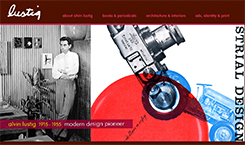 Alvin Lustig
Alvin Lustig Paul Rand
Paul Rand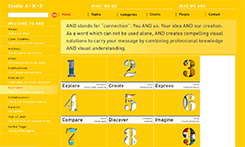 Jean-Benoit Levy
Jean-Benoit Levy 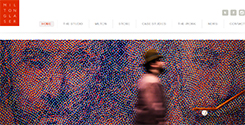 Few designers evoke as much praise from their eminent peers as
Few designers evoke as much praise from their eminent peers as 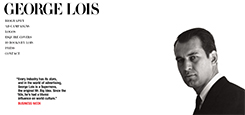 As one of this century's most accomplished progenitors of Big Idea advertising, ad luminary
As one of this century's most accomplished progenitors of Big Idea advertising, ad luminary 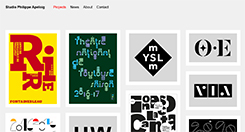 A consistent vision pervades the design endeavors of
A consistent vision pervades the design endeavors of